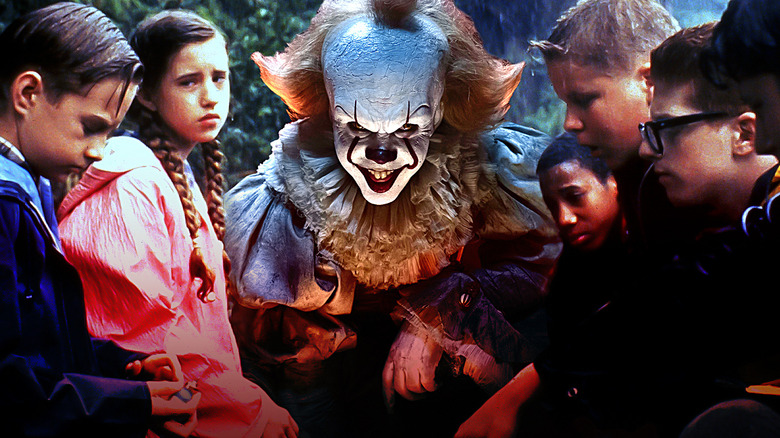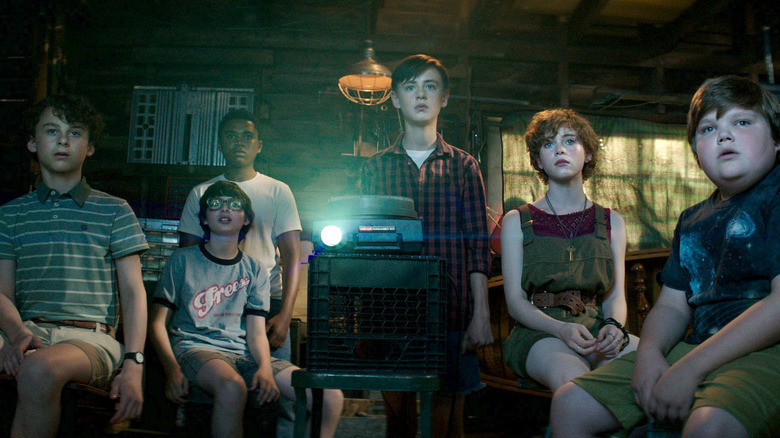In April of 1985, Stephen King told The Washington Post he was working on a sprawling new novel; a book that had him “obsessed for years.” “I’ve been working on the rewrite, and I’m surrounded by this huge manuscript,” he said. “There are times when I think I just ought to burn it.” He didn’t burn it. Instead, he finished the book, and it arrived on shelves a little over a year later, in September of 1986. The book was “It,” and it would be King’s magnum opus. Seemingly everything King knew about scaring people was packed into his massive tome about an ancient shape-shifting evil entity that likes to snack on children.
Stephen King has written a lot of books, but if I had to pick three that stand out the most, at least on a public consciousness level, they would be “The Shining,” “Pet Sematary,” and of course, “It.” While King didn’t invent the idea of the scary clown, he made it wildly popular, and every creepy horror movie clown since “It” owes a debt to King’s Pennywise, that malevolent trickster who can change into a million different scary things. King’s book is like “The Godfather Part II” of horror novels, cutting back and forth in time to tell one massive, sprawling story. In the 1980s, a group of adults who can’t remember their childhood are called back to their hometown to do battle with a supernatural force preying on kids. As they return home, the past comes flooding back, and we see how this group battled the beast when they were children in the late 1950s. Loaded with Americana nostalgia and bursts of blood-curdling horror, “It” is one of the best things King created, and it has stood the test of time, terrifying generations.
Part of the reason “It” has endured for so long is that it’s been adapted to the screen numerous times, finding ways to frighten people who haven’t even read the book. “It” was first adapted as a miniseries in 1990. Tim Curry’s take on Pennywise became almost instantly iconic, and it felt like no one could ever fill his clown shoes. But in 2017, a big screen adaptation of “It” arrived to traumatize people all over again — and Stephen King had one specific requirement for this new take on his classic novel.
Stephen King wanted the It movie to be rated R
Airing in two parts, the 1990 adaptation of “It” is beloved among King fans, primarily for Tim Curry’s incredible performance as Pennywise. That said, since the miniseries aired on network TV (ABC, to be exact), it had to tone down a lot of King’s subject matter. King is a very R-rated writer, and the “It” novel doesn’t shy away from graphic, gruesome violence (it also contains a rather infamous sex scene that I’m not even going to touch here, since both adaptations of “It” wisely omit the moment entirely). “ABC is one of those networks that still has a fairly strong censorship code,” King told the magazine Cinefantastique when the miniseries was in development (via Stephen Jones’ book “Creepshows”).
So when Hollywood came calling again in the 2010s to adapt “It” to the big screen, King saw it as a chance to do things differently and not shy away from the more explicit elements of his book. “My only requirement was that they go ahead and try to do as much of the novel as they could, which meant an R rating,” King told Vanity Fair. King added that he wanted the big screen adaptation to be “more balls to the wall.” He continued:
“The first one was true enough to the book, and its heart was certainly in the right place, but TV is a hurry-up medium, and the budget is a little bit on the low side . . . and in the 80s, there were a lot of things you can’t do on TV. You weren’t supposed to show children in jeopardy on TV, and that’s what It’s all about.”
Sure enough, when “It” hit theaters in 2017, it was firmly rated R — the opening scene alone doesn’t shy away from showing a child having his arm bloodily ripped off by Pennywise, played memorably by Bill Skarsgård. “It” was also a huge box office hit and ushered in a new Stephen King adaptation boom for movies and TV — a boom that continues to this day, with new plenty of new King projects on the horizon.








